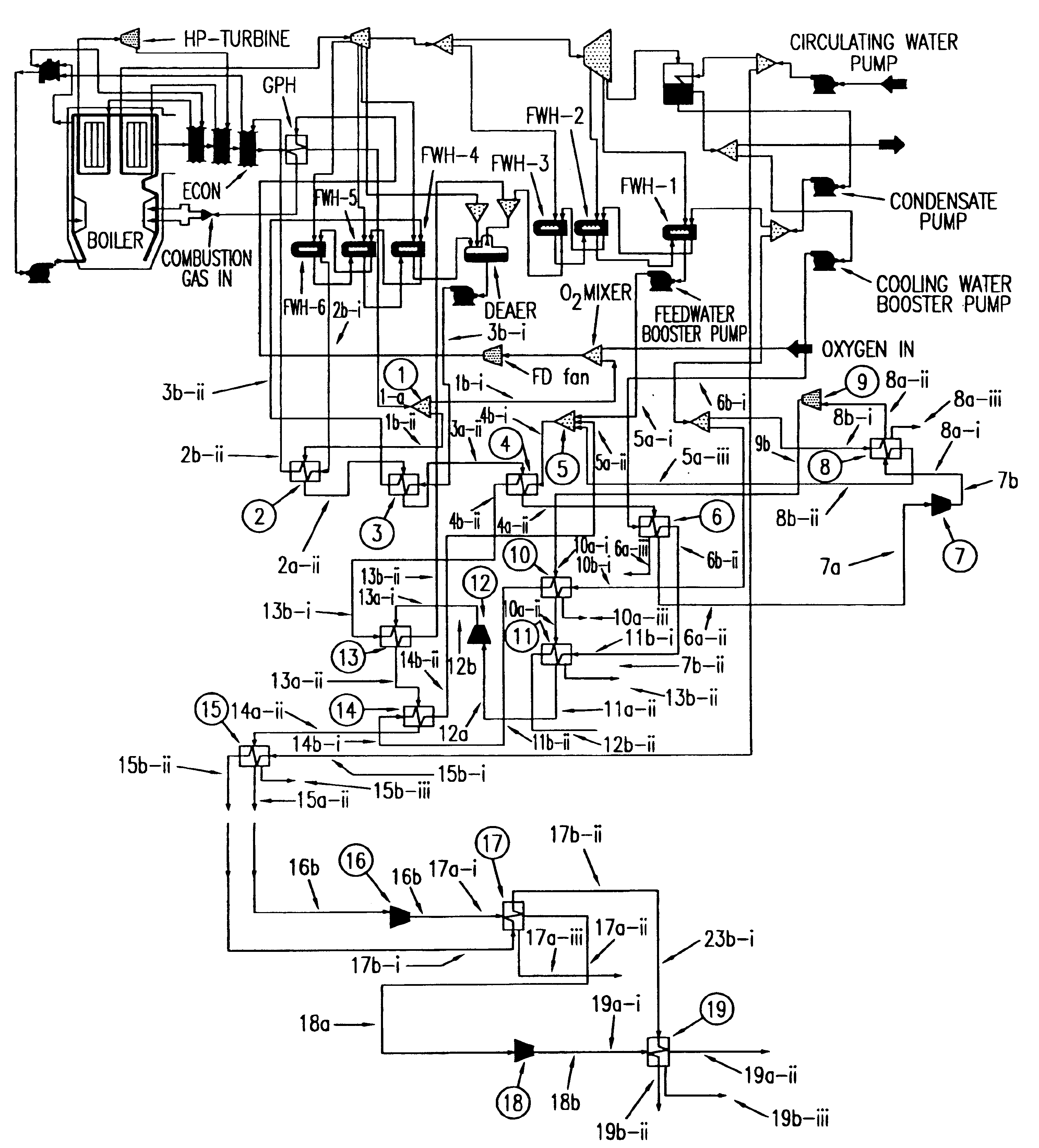Compression stripping of flue gas with energy recovery
a technology of compression stripping and flue gas, which is applied in the direction of greenhouse gas reduction, separation processes, lighting and heating apparatus, etc., can solve the problems of significant energy required to compress flue gas and the dramatic drop in power plant thermal efficiency, so as to reduce auxiliary power requirements and reduce costs
- Summary
- Abstract
- Description
- Claims
- Application Information
AI Technical Summary
Benefits of technology
Problems solved by technology
Method used
Image
Examples
Embodiment Construction
[0014]We have used computer modeling using GateCycle™ modeling software to examine energy recovery in two power plant designs which recover CO2 and SO2. The basic models include a subcritical single reheat PC unit (2,400 psi (16.55 MPa), 1,004° F. (540° C.), 1,004° F. (540° C.)) see FIG. 1, and a mildly supercritical double reheat PC unit (3,500 psi (24.13 MPa), 1,050° F. (566° C.), 1,050° F. (566° C.), 1,050° F. (566° C.)). The CO2 in the flue gas is removed and converted to liquid (or supercritical fluid) form at pressures suitable for transmission through a pipeline (2,000-5,000 psi (13.8-34.5 MPa). While this modeling effort examined standard subcritical and supercritical systems, there is no reason to restrict these principles to the two configurations studied here. The design of the subcritical unit is based on an example model provided with the power plant modeling software (GateCycle™).
[0015]The supercritical power generation unit model was developed based on the heat balanc...
PUM
| Property | Measurement | Unit |
|---|---|---|
| pressures | aaaaa | aaaaa |
| temperature | aaaaa | aaaaa |
| power | aaaaa | aaaaa |
Abstract
Description
Claims
Application Information
 Login to View More
Login to View More - R&D
- Intellectual Property
- Life Sciences
- Materials
- Tech Scout
- Unparalleled Data Quality
- Higher Quality Content
- 60% Fewer Hallucinations
Browse by: Latest US Patents, China's latest patents, Technical Efficacy Thesaurus, Application Domain, Technology Topic, Popular Technical Reports.
© 2025 PatSnap. All rights reserved.Legal|Privacy policy|Modern Slavery Act Transparency Statement|Sitemap|About US| Contact US: help@patsnap.com



